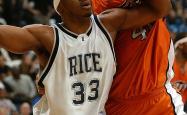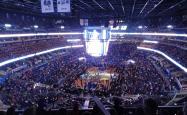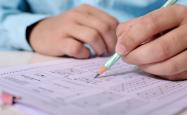英语打篮球的作文
Title: The Impact of Brawls in Basketball: A Reflection
Brawls in basketball, while infrequent, cast a shadow over the sport's ethos of teamwork and sportsmanship. The repercussions extend beyond the court, affecting players, teams, and the sport's reputation as a whole. Let's delve into the multifaceted impact of such incidents.
Disruption of Gameplay and Safety Concerns:
Brawls disrupt the flow of the game, often leading to stoppages, ejections, and even suspensions. This not only affects the players involved but also dampens the viewing experience for fans. Moreover, the physical altercations pose serious safety concerns for both players and officials, risking injuries that can have longterm consequences.
Damage to Player Reputation:

Players involved in brawls face scrutiny from fans, media, and sponsors. Their actions are magnified in the age of social media, potentially tarnishing their reputation and affecting their marketability. For young athletes aspiring to professional careers, such incidents can derail promising futures.
Team Dynamics and Performance:
Brawls strain team dynamics, eroding trust and cohesion among players. The fallout can linger beyond the incident, affecting teamwork on the court and team morale off the court. Such disruptions can impede performance, leading to losses and impacting a team's standing in the league.
League and Organizational Responses:
Professional leagues typically respond to brawls with fines, suspensions, and other disciplinary actions. While intended to deter future incidents, these measures can also polarize opinions among fans, players, and stakeholders. The league's handling of such situations shapes its image and sets a precedent for addressing similar incidents in the future.
Impact on Spectator Perception:
Brawls tarnish the image of basketball as a sport that promotes discipline, respect, and fair play. Spectators, particularly younger fans, may question the integrity of the game and its role models. This can lead to diminished interest in basketball and a decline in participation at various levels, affecting the sport's growth and sustainability.
Preventive Measures and Education:
To mitigate the occurrence of brawls, proactive measures are essential. This includes fostering a culture of respect and sportsmanship from grassroots levels to professional leagues. Education programs on conflict resolution, emotional control, and the consequences of violent behavior can empower athletes to handle disputes constructively.
Conclusion:
Brawls in basketball are more than just moments of heated competition; they have farreaching consequences that ripple through the sport. By addressing the root causes, promoting a culture of respect, and implementing effective disciplinary measures, the basketball community can strive towards a safer, more harmonious environment for players, teams, and fans alike.
References:
1. "Brawls in Basketball: Causes, Consequences, and Solutions" Sports Psychology Journal
2. "The Impact of Player Brawls on Fan Engagement" Journal of Sports Management
3. "Addressing Violence in Sports: Strategies for Prevention" International Journal of Sports Science & Coaching









